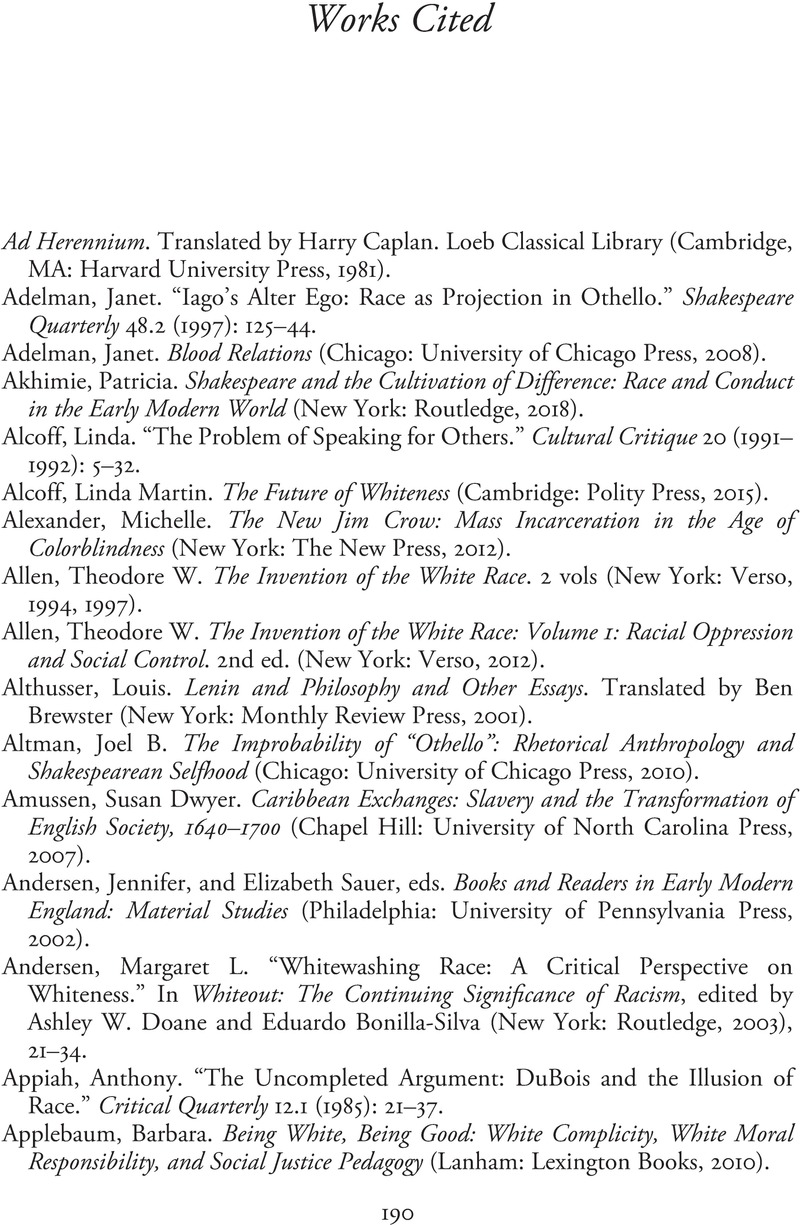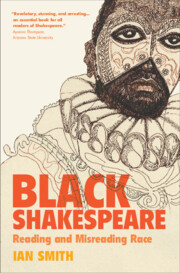Book contents
Works Cited
Published online by Cambridge University Press: 08 September 2022
Summary

- Type
- Chapter
- Information
- Black ShakespeareReading and Misreading Race, pp. 190 - 212Publisher: Cambridge University PressPrint publication year: 2022



